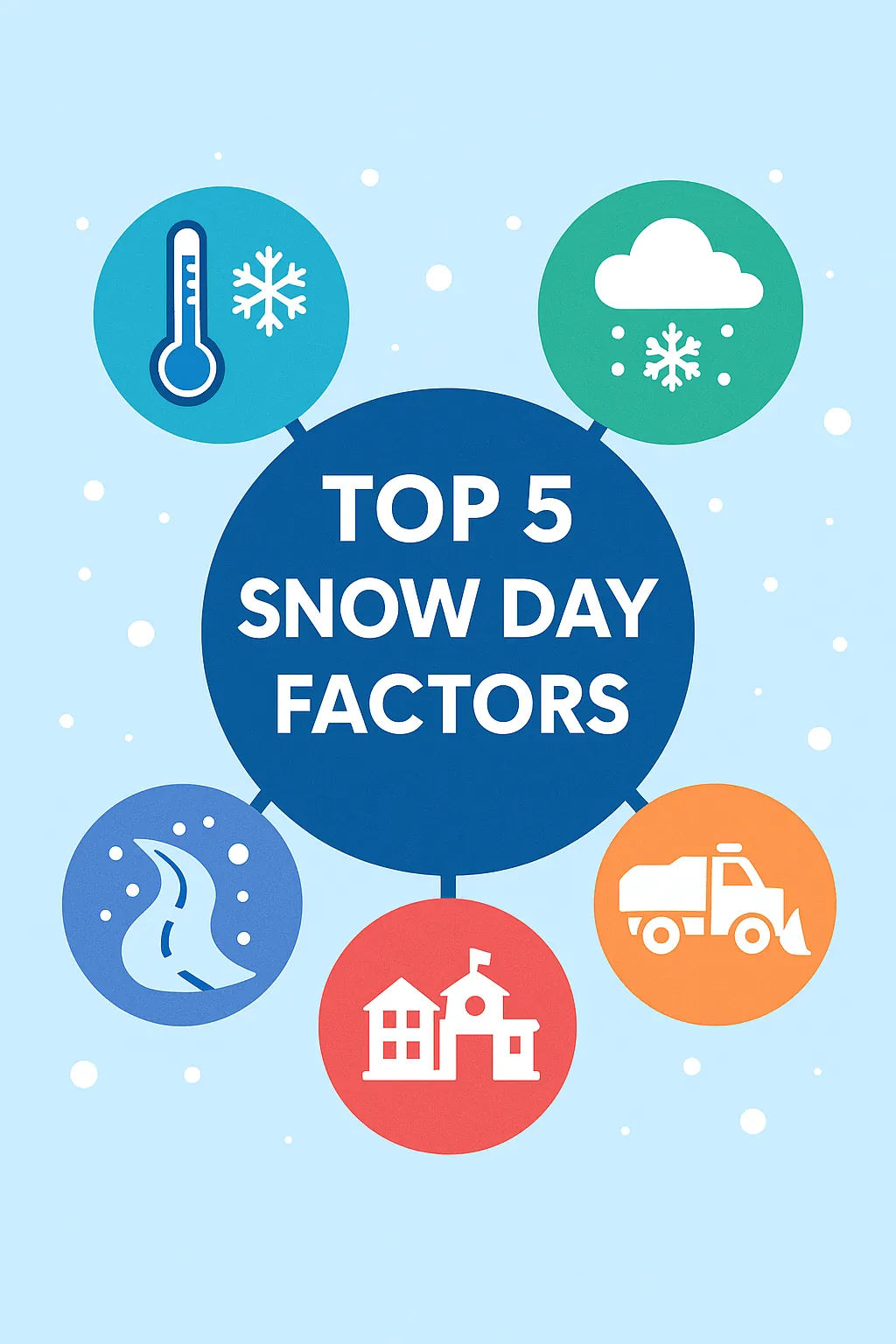Top 5 Factors That Determine a Snow Day Anywhere in the World

Snow day decisions might seem like a mystery, but they’re actually based on a handful of key variables. Whether you live in the mountains of Japan, the plains of Canada or the suburbs of Michigan, these factors play a central role in determining whether school will be cancelled. Understanding them can help you interpret our school snow day calculator results and anticipate closures.
1. Snowfall Amount
The most obvious variable is how much snow is expected. Heavy snow can quickly accumulate on roads and sidewalks, making travel dangerous. In many districts, just a few inches of snow are enough to cancel classes; in others, it takes more than a foot. For example, five to six inches is often the snow day sweet spot. Our algorithm measures predicted snowfall over the next 24 hours and converts it to centimetres. The larger the total, the higher the base probability.
2. Temperature and Wind Chill
Even light snow can be hazardous when temperatures are low. Snow forms when the air is below 0 °C (32 °F), but wind chill can make it feel much colder. Prolonged exposure to frigid conditions raises safety concerns for students waiting at bus stops. Calculators like ours therefore factor in the forecasted temperature and wind speed, adding to the probability if the mercury drops below freezing or winds exceed 10 mph.
3. Timing of the Storm
When snow falls can be just as important as how much falls. Overnight storms that peak during the early morning commute create hazardous conditions before roads can be cleared. On the other hand, snow that starts after lunchtime might delay activities but doesn’t require a full closure. Our model weights overnight snow more heavily than midday flurries. This is one reason why a snow day calculator may predict a closure even if the total snowfall seems low.
4. Local Infrastructure and Preparedness
Not all communities are equally prepared for winter. Northern countries like Canada, Finland and Russia invest heavily in snow plows and salt trucks. Schools in those regions often remain open unless a blizzard hits. In contrast, southern states may own little snow‑removal equipment. A few centimetres of snow can bring entire cities to a halt. Our snow day calculator Michigan uses regional data to adjust thresholds; Michigan’s infrastructure means schools need more snow to close than those in Tennessee or North Carolina.
5. School Policies and Road Conditions
Ultimately, the final decision rests with local officials. School boards consider road conditions, bus routes, staffing and heating. Rural districts often cancel more quickly because buses travel longer distances. Boarding schools and universities may remain open because students live on campus. Our algorithm adds or subtracts probability based on the selected school type. Choosing “Elementary” boosts your chance because younger children are considered more vulnerable, while selecting “College” reduces it to reflect universities’ higher thresholds.
Putting It All Together
The next time you use a snow day chance calculator, remember that it’s crunching real meteorological and local data. No calculator can guarantee a day off — decisions also depend on administrators, weather volatility and even bus drivers’ availability. However, understanding these five factors will help you interpret your results and plan ahead. For more on how we combine them, see How Accurate Is a Snow Day Calculator? or try our snow day prediction calculator now.
Tags: top snow day factors, snow day calculator michigan, school snow day calculator, snow day chance calculator
